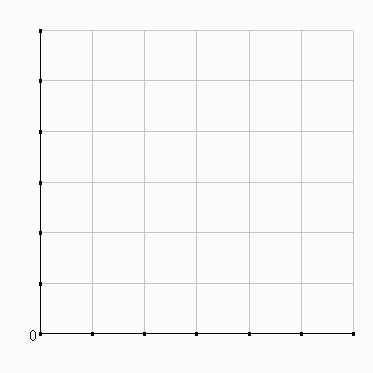| Year | RGDP (B$2000) |
GDP Deflator (2000=100) |
Potential RGDP (B$2000) |
Unemployment Rate (percent) |
|
| a | 1949 Q4 | 1,629.9 | 16.27 | 1,925.2 | 7.0 |
| b | 1953 Q2 | 2,098.1 | 18.21 | 2.6 | |
| c | 1954 Q1 | 2,065.3 | 18.37 | 5.2 |

In the early 1950s, the U.S. involvement in the Korean War led to a positive aggregate demand shock to the U.S. macroeconomy. The table below reports data for the years surrounding the shock.
|
 |
||||||||||||||||||||||
| (1) | Initial equilibrium: Illustrate situation "a" in the diagram above. Label the values of the GDP deflator and real GDP. Add the LRAS curve to your diagram, and label its value. |
| (2) | Macroeconomic shock: Diagram the impact of the extra government
demand for goods and services because of the Korean War. Before recording the actual data for 1953, use the AD/AS macro model to
predict whether each of the following should rise (h), fall (i), remain
the same (0) or change in an uncertain direction (?): real GDP: ____; the
GDP deflator: ____; the unemployment rate: ____. Now enter the data for
1953 into the diagram above. Did the macro model correctly predict the
directions of the changes in real GDP ______, the GDP deflator ______ and the unemployment
|
| (3) | Self correction: Locate the inflationary gap that the AD shock creates. How large is it? $________ billion. Because of the inflationary gap and the resulting excess ______________ (choose: "demand for" or "supply of") resources, resource prices will ______, shifting the SRAS curve ____________. Show this shift in your diagram and use the shift to predict whether each of the following should rise (h, fall (i), remain the same (0) or change in an uncertain direction (?) after 1953: real GDP: ____; the GDP deflator: ____; the unemployment rate: ____. Do not plot the 1954 data in the diagram, but look it over and compare it to the 1953 data. Did the self-correction mechanism accurately predict the direction of the change in real GDP ______, the GDP deflator ______ and the unemployment rate? ______ |
In the late 1970s and early 1980s, sharp oil price increases by OPEC led to a negative aggregate supply shock to the U.S. macroeconomy. The table below reports data for the years surrounding the shock.
|

|
||||||||||||||||||||||
| (1) | Initial equilibrium: Illustrate situation "a" in the diagram above. Label the values of the GDP deflator and real GDP. Add the LRAS curve to your diagram, and label its value. |
| (2) | Macroeconomic shock: The impact of the higher oil
prices shifts the ________ curve. Illustrate this change in the diagram. Before recording the actual data for 1982,
use the AD/AS macro model to predict whether each of the following should
rise (h), fall (i), remain
the same (0) or change in an uncertain direction (?): real GDP: ____; the
GDP deflator: ____; the unemployment rate: ____. Now enter the data for
1982 into the diagram above. Did the macro model correctly predict the
directions of the changes in real GDP ______, the GDP deflator ______ and the unemployment
|
| (3) | Self correction: Locate the recessionary gap that the shock creates. How large is it? $________ billion. Because of the recessionary gap and the resulting excess ______________ (choose: "demand for" or "supply of") resources, resource prices will ______, shifting the SRAS curve ____________. Show this shift in your diagram and use the shift to predict whether each of the following should rise (h), fall (i), remain the same (0) or change in an uncertain direction (?) after 1982: real GDP: ____; the GDP deflator: ____; the unemployment rate: ____. Do not plot the 1984 data in the diagram, but look it over and compare it to the 1982 data. Did the self-correction mechanism accurately predict the direction of the change in real GDP? ______ the GDP deflator? ______ the unemployment rate? ______ |